Why this resume works
- Quantifies accomplishments: By pulling metrics like a 99% on-time performance and reducing incidents by 15%, the applicant’s accomplishments clearly reveal their powerful contributions to rail operations.
- Uses action-oriented language: Using powerful action verbs such as “managed,” “ensured,” and “trained” in their work experience, the applicant effectively conveys initiative and results-driven focus.
- Illustrates problem-solving ability: The creation of a new scheduling system that cut delays by 25% illustrates critical thinking and innovative problem-solving skills, highlighting the applicant’s ability to improve operational efficiency.
More Locomotive Engineer Resume Examples
Check out these locomotive engineer resume examples to learn how to showcase your technical skills, safety record, and operational expertise. Use these samples to craft a resume that stands out.
Entry-level locomotive engineer
Why this resume works
- Puts skills at the forefront: Placing skills such as train control systems and engine maintenance at the top, this applicant leverages a skills-based resume format approach, excellent for entry-level job seekers focusing on technical expertise.
- Effective use of keywords: By incorporating terms like “on-time arrivals” and “safety protocols,” the applicant effectively uses keywords to align with ATS requirements for railway roles.
- Centers on academic background: The education section shows academic prowess with a master’s in transportation engineering and a bachelor’s in mechanical engineering, showing a strong educational foundation in their early career.
Mid-level locomotive engineer
Why this resume works
- Points to measurable outcomes: By focusing on measurable outcomes like reducing delays by 15% and improving efficiency by 10%, the applicant shows a strong impact on operational performance.
- Demonstrates language abilities: The applicant’s diverse language skills show their potential to facilitate effective cross-cultural communication.
- Includes a mix of soft and hard skills: Balancing technical know-how with interpersonal skills, the applicant’s ability to manage crews and optimize routes highlights a comprehensive skill set.
Experienced locomotive engineer
Why this resume works
- Showcases impressive accomplishments: By detailing achievements like saving $500k in fuel, the applicant’s accomplishments reveal a strong impact on business efficiency and resource management.
- Focuses on work history: Using a chronological resume, the applicant effectively organizes extensive experience, showcasing career progression from railway technician to locomotive engineer over 10 years.
- Emphasizes leadership skills: Training 12 recruits at Precision Rail Services highlights the applicant’s leadership skills, fostering team growth and improving operational skill through hands-on mentoring.
Locomotive Engineer Resume Template (Text Version)
Aya Rodriguez
Louisville, KY 40210
(555)555-5555
Aya.Rodriguez@example.com
Professional Summary
Seasoned locomotive engineer with over 8 years of expertise in train operations, safety protocols, and team leadership. Proven track record of enhancing rail efficiency and implementing effective safety programs. Highly skilled in optimizing schedules and ensuring regulatory compliance.
Work History
Locomotive Engineer
Ironstream Railways – Louisville, KY
January 2022 – August 2025
- Managed train operations with 99% on-time performance
- Ensured safety compliance, reducing incidents by 15%
- Trained 5 junior engineers, enhancing team efficiency
Train Operations Supervisor
Express Transit Co. – Louisville, KY
June 2017 – December 2021
- Led team of 10, improving operation efficacy by 20%
- Implemented scheduling enhancements, cutting delays by 25%
- Oversaw maintenance checks, increasing reliability by 18%
Railway Conductor
Western Rail Lines – Louisville, KY
September 2014 – May 2017
- Facilitated seamless rail car formation, boosting speed by 12%
- Managed passenger interactions, increasing satisfaction by 30%
- Conducted safety drills, reducing emergency response time by 40%
Languages
- Spanish – Beginner (A1)
- French – Beginner (A1)
- German – Beginner (A1)
Skills
- Train Operation Excellence
- Safety Protocols
- Railway Systems Maintenance
- Team Leadership
- Schedule Optimization
- Passenger Service Management
- Technical Problem Solving
- Regulatory Compliance
Certifications
- Certified Locomotive Engineer – American Railway Association
- Railway Safety Technician – Transport Safety Institute
Education
Master of Science Transportation Engineering
University of Illinois Champaign, Illinois
May 2014
Bachelor of Science Mechanical Engineering
Illinois State University Normal, Illinois
May 2012
Related Resume Guides
Advice for Writing Your Locomotive Engineer Resume
Learn how to write a resume specifically for locomotive engineers that highlights your technical skills, safety record, and passion for transportation.
Highlight relevant technical skills
Technical skills play an important role for a locomotive engineer, as they directly impact safety and job performance. Creating a dedicated section for these skills on your resume can help employers quickly recognize your expertise. Alternatively, you can weave these skills into your work experience to demonstrate how you’ve applied them in real-world scenarios, ensuring that your abilities are highlighted.
Focus on skills like:
- Operating and maintaining locomotives
- Understanding mechanical systems
- Working with braking systems or signal equipment
- Knowledge of electrical systems, hydraulic controls, and fuel management
- Experience with diagnostic tools or software used for engine troubleshooting
If you have hands-on experience with specific tools or technologies such as GPS tracking or automated train control systems, make sure to mention those details. Employers appreciate familiarity with modern railway equipment and technology.
Demonstrate how your technical skills align with industry demands by listing them clearly or connecting them to achievements in previous roles to show your fit for the role.
Example of a technical skills section
- Train control systems (positive train control, automatic train control)
- Locomotive operations & maintenance
- Railway signaling systems
- Diesel engine mechanics
- Braking systems & air brake technology
- Track inspection tools & software
- Safety protocols & hazard analysis
- Route planning & scheduling software
While technical skills are key, showing off your soft skills like communication, teamwork, and adaptability on your resume can really make you shine.
Quantify your accomplishments
Quantifying accomplishments in a resume makes it more compelling because it shows real impact instead of just listing responsibilities. For a locomotive engineer, this means turning everyday duties into measurable achievements.
For example, instead of saying “operated trains,” you could say “improved on-time arrival rates by 15% over one year.” Including details like job title, employer name, location, and employment dates helps set the context. But it’s the numbers that catch a hiring manager’s eye and show what you really achieved.
Using action verbs with metrics in the work experience section creates a results-driven resume. This approach allows hiring managers to quickly see your skills and impact. These kinds of specifics paint a clear picture of your contributions as a locomotive engineer, making it easier for employers to see how you can add value to their team right away.
5 locomotive engineer work history bullet point examples
- Operated locomotives over a 1,500-mile territory, achieving an on-time performance rate of 98%.
- Conducted regular maintenance checks and troubleshooting to ensure operational efficiency, resulting in a 20% decrease in mechanical failures.
- Trained and mentored 10 junior engineers, improving team productivity by 25% through improved skill development.
- Collaborated with dispatchers and crew members to coordinate train schedules, reducing delays by 15% during peak times.
- Implemented safety protocols that led to a zero-incident record over two consecutive years.
Get inspired and make your resume stand out by checking out professional resume examples. They’re a great way to spark ideas and create a strong layout fast.
Write a powerful professional summary
A professional summary on a resume acts as an introduction to hiring managers, summarizing your career highlights and skills. When crafting your resume, decide between using a summary or a resume objective. Each serves different purposes based on where you are in your career.
Typically, a professional summary is three to four sentences long, showcasing your experience, skills, and achievements. It’s best suited for those who have substantial work history. This section helps present your professional identity and the value you bring to the role of a locomotive engineer.
In contrast, focusing on career goals with a resume objective is ideal for entry-level applicants, those changing careers, or individuals with employment gaps. While a summary says “what I’ve accomplished,” an objective states “what I aim to contribute.”
Next, let’s explore examples of both summaries and objectives tailored to various levels of experience to guide you in crafting the perfect resume section for any job application.
Locomotive engineer resume summary examples
Entry-level
Recent graduate with a Bachelor of Science in Mechanical Engineering and certified as a locomotive engineer. Completed internships with leading rail companies, gaining foundational skills in train operations and safety protocols. Strong understanding of FRA regulations and committed to ensuring safe and efficient railroad operations.
Mid-career
Locomotive engineer with over seven years of experience in freight transportation. Proven track record in managing on-time delivery schedules, conducting pre-trip inspections, and troubleshooting mechanical issues. Certified by the Federal Railroad Administration (FRA) and recognized for excellent problem-solving skills and reliability under pressure.
Experienced
Seasoned locomotive engineer specializing in high-speed passenger rail services with more than 15 years in the industry. Expertise in advanced train control systems and crew management, contributing to significant improvements in operational efficiency. Held leadership roles in training programs for new engineers, fostering a culture of safety and excellence.
Locomotive engineer resume objective examples
Entry-level applicant
Recent graduate with a degree in transportation engineering eager to launch a career as a locomotive engineer. Passionate about using technical skills and safety knowledge to ensure efficient train operations while contributing to the growth and reliability of the rail transport industry.
Career changer
Dedicated professional transitioning from logistics management to locomotive engineering, bringing a strong understanding of supply chain dynamics and teamwork. Committed to learning and excelling in train operations while ensuring timely and safe delivery of freight services.
Technical training focus
Individual with specialized training in railway technology seeks an entry-level position as a locomotive engineer. Aiming to apply hands-on technical expertise and problem-solving abilities to improve operational efficiency and support sustainable rail transport solutions.
When creating a resume, it’s important to select a resume template with simple fonts and clean lines. Avoid excessive colors or images that can distract from your skills and work history.
Showcase your credentials
Listing your credentials like certifications, licenses, and training is important when applying for a technical job like a locomotive engineer. These credentials show you have the skills and knowledge needed to do the job well.
Many employers look for specific qualifications to make sure you’re ready for the challenges of the role. Creating a dedicated certifications section on your resume helps you stand out and shows that you take your career seriously. This can be an extra benefit alongside your education section.
Some certifications you may have as a locomotive engineer or consider pursuing include:
- Federal Railroad Administration (FRA) Certification
- Certified Locomotive Engineer by National Academy of Railroad Sciences
- Advanced Train Handling Certification
- Hazardous Materials Transportation Certification
Having these certifications proves that you are trained and ready to handle the responsibilities of a locomotive engineer. They help employers see your commitment to safety and efficiency on the job. Including them prominently on your resume can boost your chances of landing an interview.
Example of a certifications section
Certified Locomotive Engineer
Issued by: Federal Railroad Administration (FRA)
Advanced Train Control Systems Certification
Issued by: Association of American Railroads (AAR)
Positive Train Control Certification
Issued by: Federal Railroad Administration (FRA)
Choose a chronological resume format if you have steady work history in your field, but opt for a functional or combination format if you’re changing careers, have employment gaps, or want to emphasize skills over job titles.
Salary Insights for Locomotive Engineers
Looking at salary data can help you plan your career path or decide if moving to a new area makes sense. Check out the U.S. Bureau of Labor Statistics for details on pay trends across different fields—learn more below.
Top 10 highest-paying states for locomotive engineers
Locomotive engineers earn varying salaries across the United States, with a national average of $79,035. The table below highlights the states where locomotive engineers command the highest compensation.
Our salary information comes from the U.S. Bureau of Labor Statistics’ Occupational Employment and Wage Statistics survey. This official government data provides the most comprehensive and reliable salary information for locomotive engineers across all 50 states and the District of Columbia. The figures presented here reflect the May 2025 dataset, which is the most recent available as of this publication.
| State | Average Salary |
|---|---|
| Massachusetts | $100,540 |
| Connecticut | $97,100 |
| New York | $96,020 |
| Illinois | $96,440 |
| Tennessee | $88,200 |
| Delaware | $88,420 |
| New Jersey | $85,160 |
| Oklahoma | $84,570 |
| Arizona | $83,940 |
| Wyoming | $82,080 |
FAQ
Do I need to include a cover letter with my locomotive engineer resume?
Yes, adding a cover letter to your locomotive engineer resume can improve your application and differentiate you from other job seekers.
A cover letter allows you to express your enthusiasm for the role and highlight specific experiences, like handling challenging terrains or improving safety protocols.
If the company you’re applying to is known for using advanced technology or has routes through difficult landscapes, mention any relevant experience in those areas.
Consider using our Cover Letter Generator to create a personalized cover letter that aligns with your experience and the job requirements.
Additionally, reviewing cover letter examples can provide ideas on how to effectively communicate your skills and passion for working as a locomotive engineer.
How long should a locomotive engineer’s resume be?
For a locomotive engineer, a one-page resume is typically sufficient if you are early in your career or have fewer years of experience. Focus on key skills like train operation, safety protocols, and relevant certifications.
However, if you possess extensive experience or specialized expertise gained over the years, a two-page resume might better showcase your qualifications. This allows room for including detailed accomplishments such as efficiency improvements or notable projects.
Explore our guide on how long a resume should be to find tips and examples that help determine the ideal length based on your career stage and achievements.
How do you write a locomotive engineer resume with no experience?
To craft a resume with no experience for a locomotive engineer role, highlight transferable skills, relevant education, and any related training. Structure it effectively to align with the job’s responsibilities.
- Emphasize education and certifications: If you’ve completed coursework or certifications related to rail operations, mechanical systems, or safety standards, list them prominently. Include details like institution names and completion dates.
- Highlight transferable skills: Skills such as attention to detail, problem-solving, communication, and teamwork are important for locomotive engineers. Showcase where you’ve developed these abilities through school projects, volunteer work, or other non-railroad roles.
- Include relevant training or licenses: If you’ve attended workshops or obtained a CDL (Commercial Driver’s License), mention these as they demonstrate your readiness for technical operations.
- Add volunteer or hands-on experiences: Volunteering at transportation museums or participating in technical clubs can showcase enthusiasm for rail systems and practical knowledge.
Rate this article
Locomotive Engineer
Additional Resources
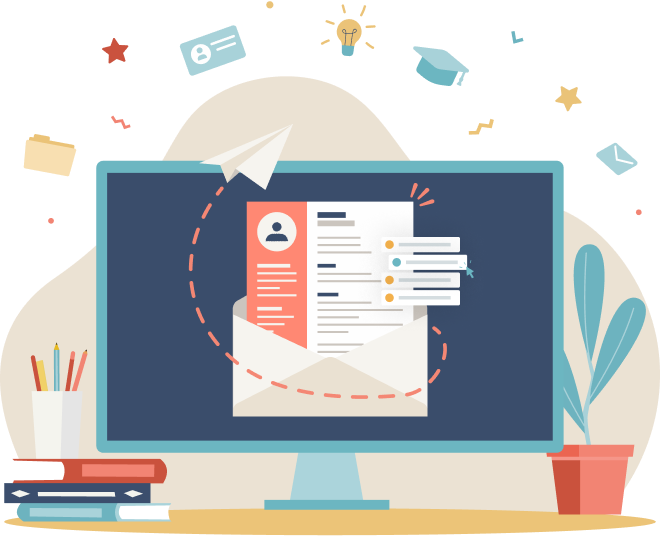
Engineering CV Examples & Templates
Engineers play many roles in designing, building and improving infrastructures, technologies, medical equipment and more. Employment in this occupation is expected to grow 4% over the next decade, bringing in

Engineering CV Examples & Templates
Engineers play many roles in designing, building and improving infrastructures, technologies, medical equipment and more. Employment in this occupation is expected to grow 4% over the next decade, bringing in
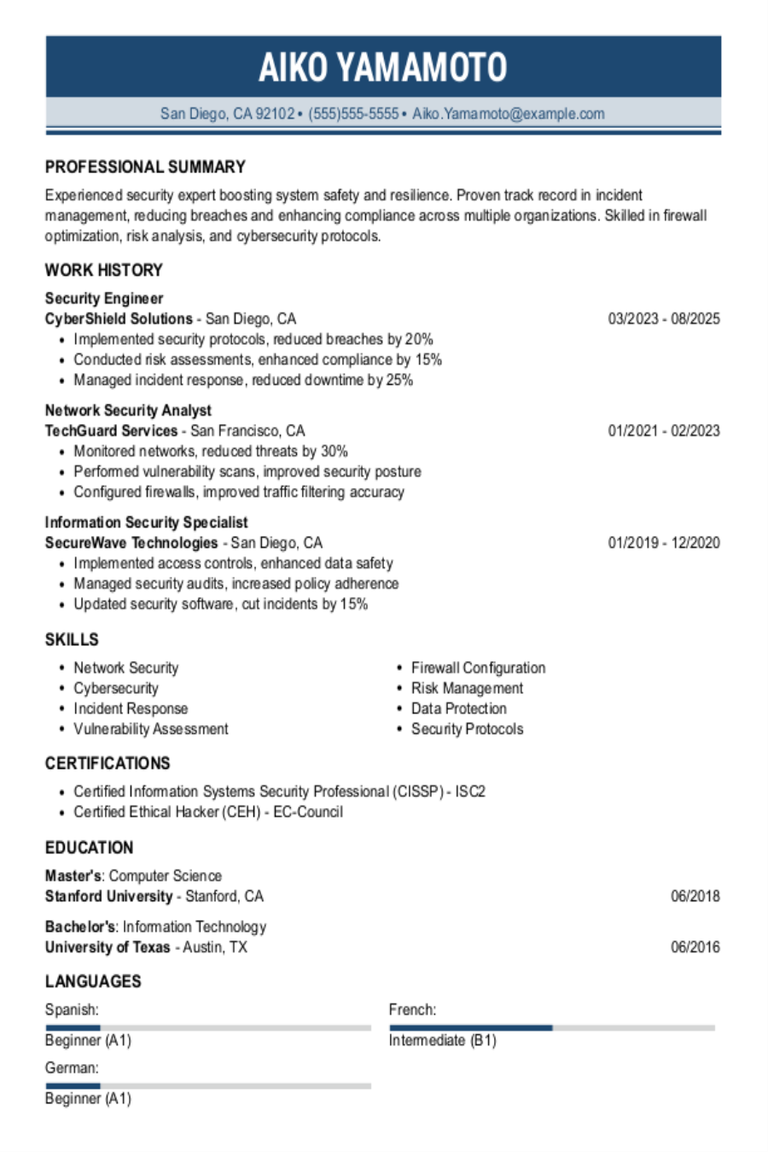
Security Engineer Resume Examples & Templates for 2025
Explore security engineer resume samples that highlight tech skills and experience in protecting data. Get tips to showcase your problem-solving abilities and cybersecurity expertise.Build my resumeImport existing resumeCustomize this templateWhy
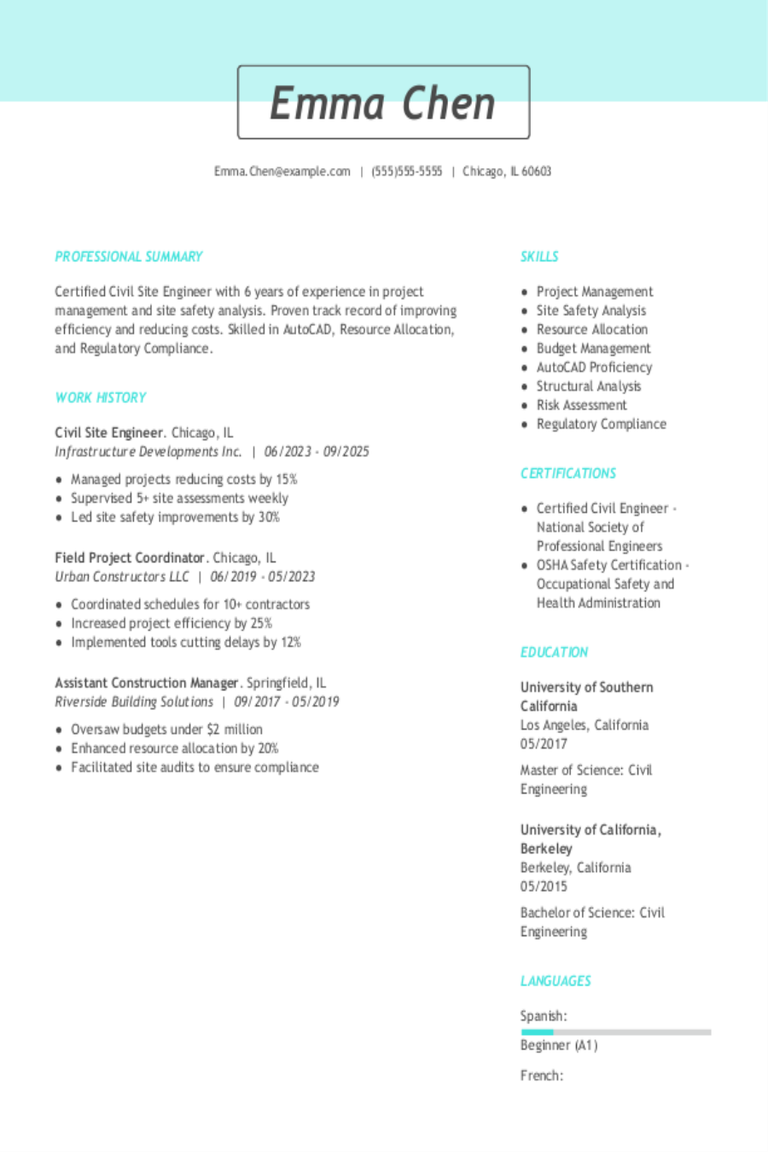
Civil Site Engineer Resume Examples & Templates for 2025
Browse civil site engineer resume examples to see how to highlight your experience planning projects, overseeing construction, and ensuring safety on site. These examples and tips help you highlight your
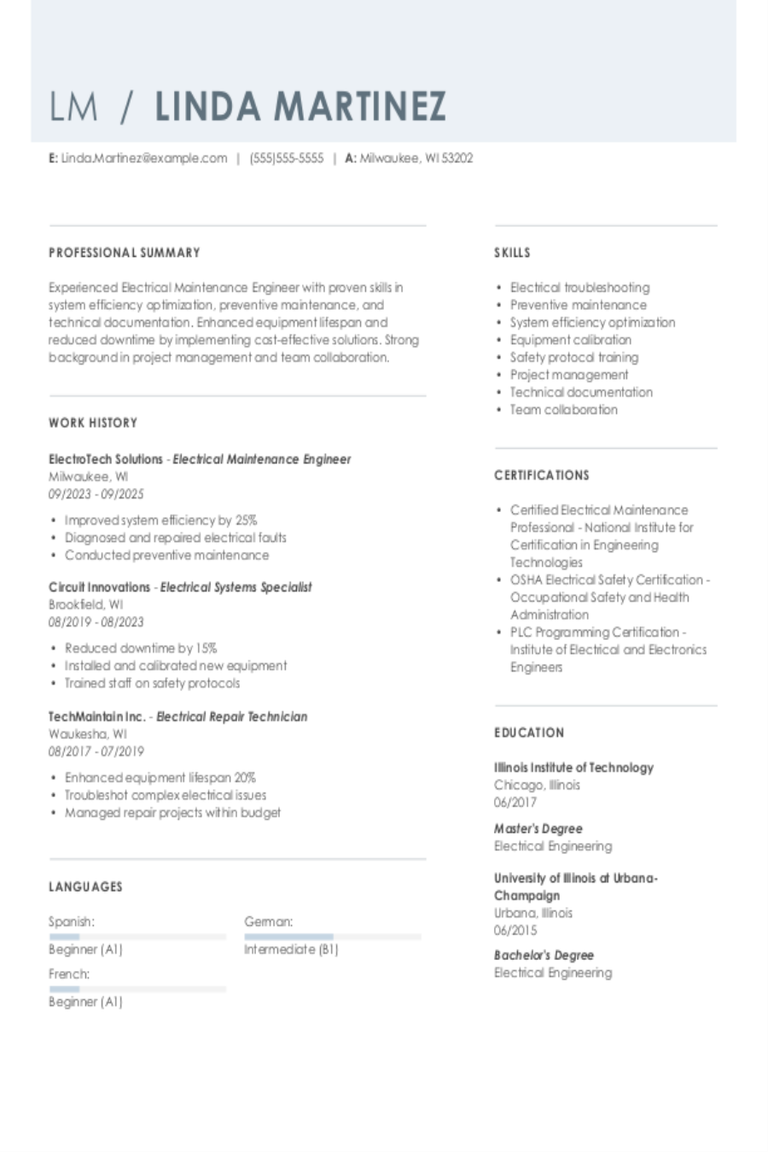
Electrical Maintenance Engineer Resume Examples & Templates for 2025
Explore electrical maintenance engineer examples and tips to learn how to effectively showcase your hands-on experience, teamwork, and problem-solving expertise.Build my resumeImport existing resumeCustomize this templateWhy this resume worksQuantifies accomplishments: By
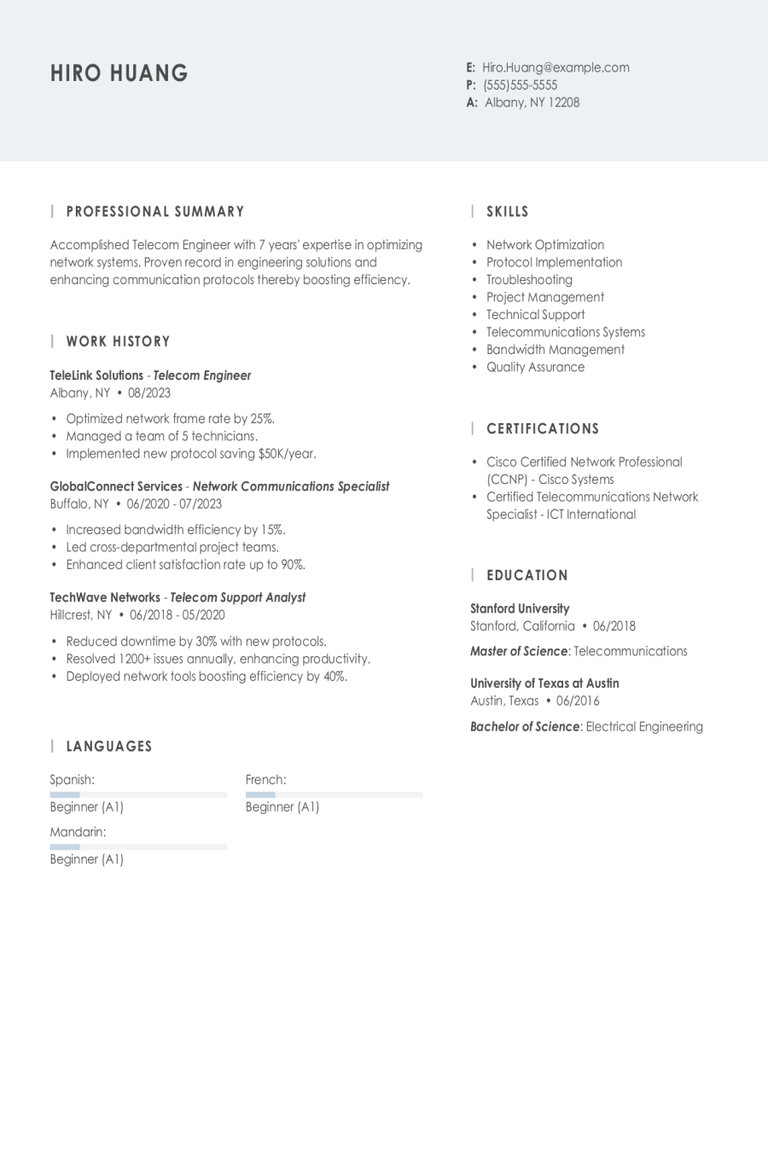
Telecom Engineer Resume Examples & Templates for 2025
Explore telecom engineer resume examples that highlight the technical know-how and problem-solving skills needed in the field. Get tips to showcase your experience with networks, systems, and communication technologies to
